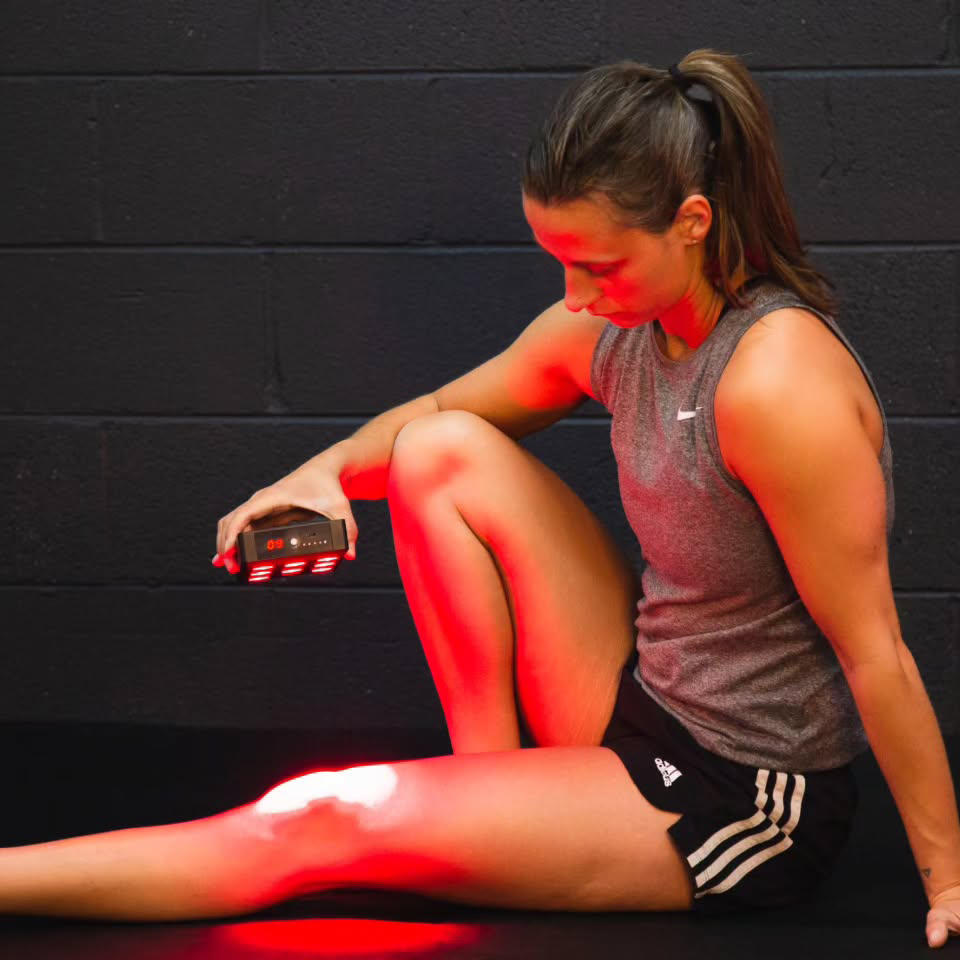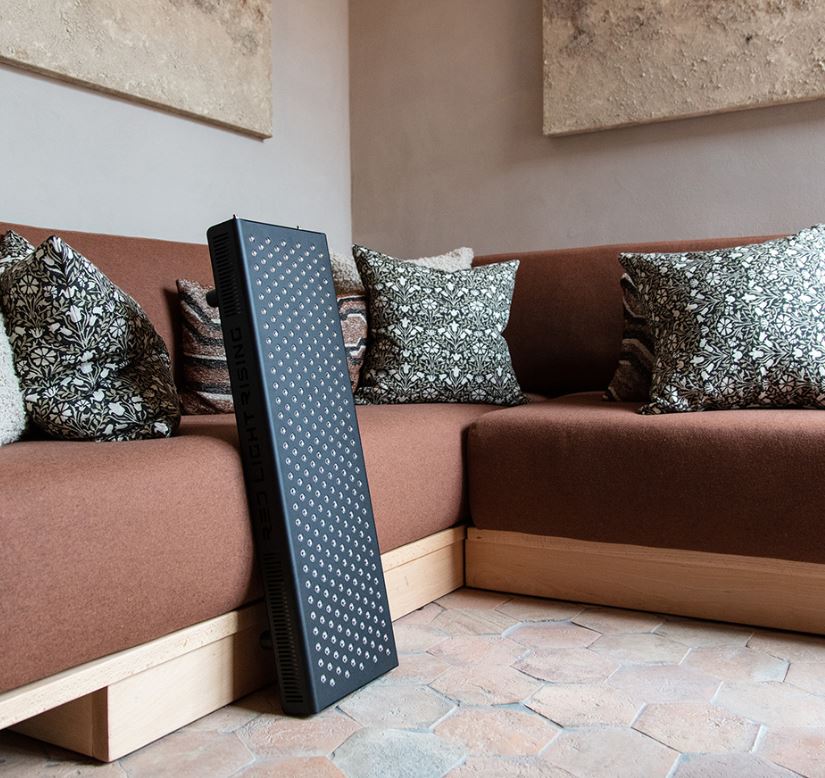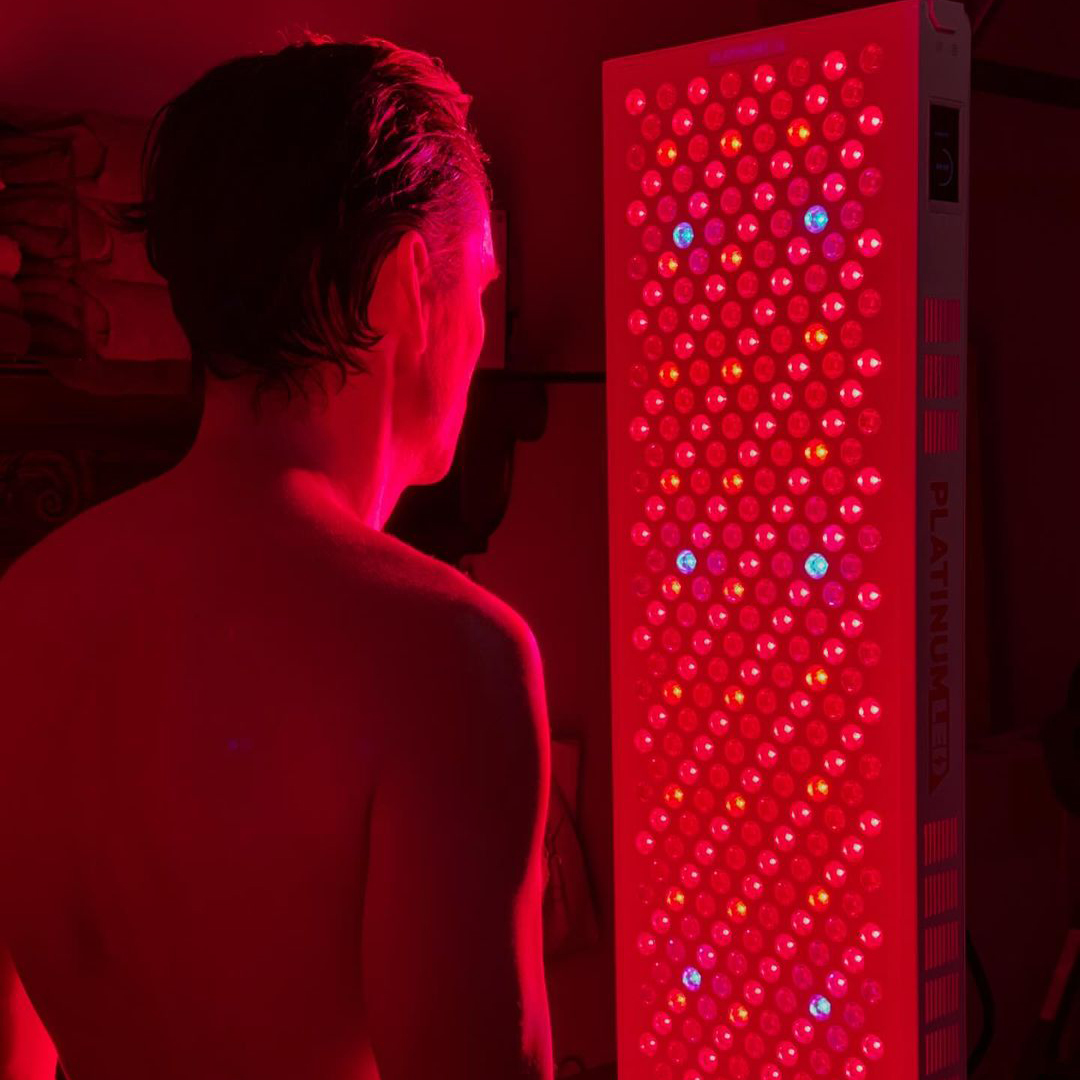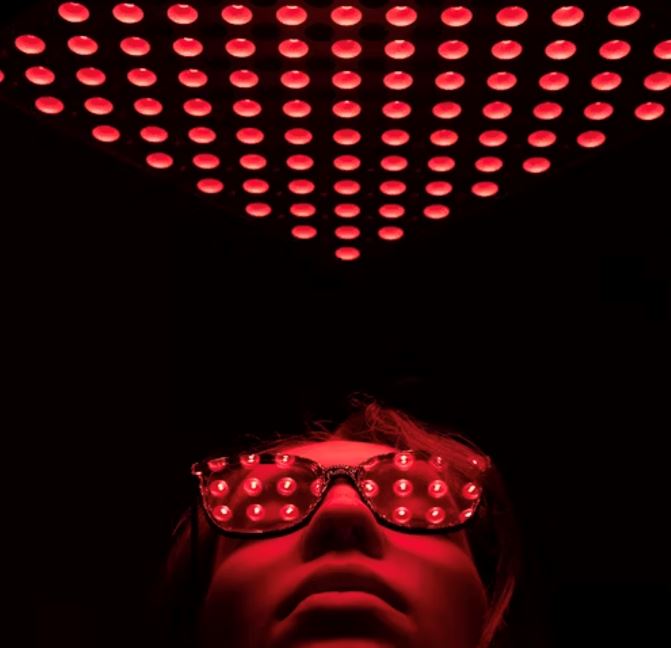![]() Free Shipping
Free Shipping ![]() Buy Now, Pay Later
Buy Now, Pay Later ![]() Eligible
Eligible
Red Light Therapy for Liver Health: Improving Function and Reducing Inflammation
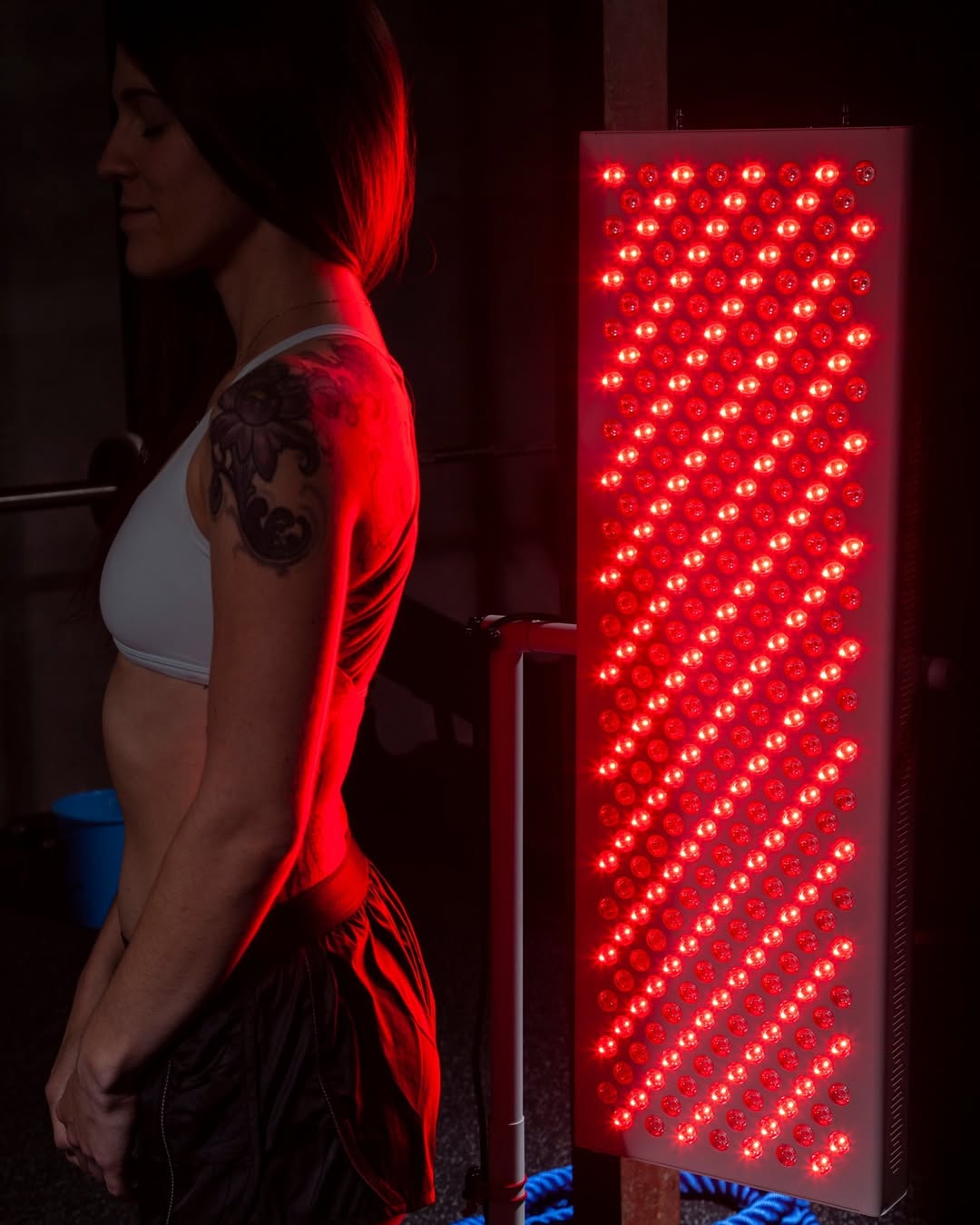
The liver is one of the most vital organs in the human body, responsible for detoxification, metabolism, immune function, and nutrient storage. However, modern lifestyles—filled with processed foods, environmental toxins, alcohol, and stress—can overburden the liver, leading to inflammation, fatty liver disease, and impaired function.
While traditional treatments like medications, dietary changes, and lifestyle modifications are commonly recommended, emerging therapies such as red light therapy (RLT) are gaining attention for their potential to enhance liver health.
In this comprehensive guide, we’ll explore:
- The science behind red light therapy
- How red light therapy supports liver function
- Evidence from studies on RLT and liver health
- Practical ways to use red light therapy for liver detoxification
- Complementary strategies to maximize benefits
By the end, you’ll understand how this non-invasive, drug-free approach could be a game-changer for liver wellness.
Understanding Red Light Therapy (RLT)
What Is Red Light Therapy?
Red light therapy, also known as photobiomodulation (PBM), involves exposing the body to low-wavelength red and near-infrared (NIR) light. Unlike UV rays, which can damage the skin, red and NIR light penetrate deep into tissues without causing harm.
This therapy has been studied for:
- Skin health (collagen production, wound healing)
- Pain relief (reducing inflammation in joints)
- Muscle recovery (enhancing ATP production)
- Cognitive function (improving mitochondrial activity in the brain)
- Liver detoxification (reducing oxidative stress and inflammation)
How Does Red Light Therapy Work?
The primary mechanism of RLT is its effect on mitochondria, the energy powerhouses of cells. When red or NIR light is absorbed, it stimulates cytochrome c oxidase, a key enzyme in the mitochondrial respiratory chain. This leads to:
- Increased ATP (cellular energy) production
- Reduced oxidative stress (fewer free radicals)
- Enhanced cellular repair and regeneration
- Improved blood flow and circulation
These effects make RLT a promising tool for liver health, as the liver is highly dependent on mitochondrial function for detoxification.
The Liver: A Vital Organ Under Constant Stress
Functions of the Liver
The liver performs over 500 essential functions, including:
- Detoxification: Filtering toxins from the blood (alcohol, drugs, pollutants)
- Metabolism: Processing fats, proteins, and carbohydrates
- Bile production: Aiding digestion and fat absorption
- Immune support: Removing bacteria and pathogens
- Storage: Holding vitamins (A, D, E, K) and glycogen
Common Liver Disorders
When the liver is overworked, it can develop:
- Fatty Liver Disease (NAFLD/NASH) – Excess fat accumulation due to poor diet, obesity, or alcohol.
- Liver Fibrosis/Cirrhosis – Scarring from chronic inflammation.
- Hepatitis – Viral infections (Hepatitis B, C) or autoimmune attacks.
- Liver Cancer – Often linked to long-term damage.
Traditional vs. Emerging Therapies
Conventional treatments include:
- Dietary changes (low sugar, Mediterranean diet)
- Medications (for hepatitis, fatty liver)
- Liver detox supplements (milk thistle, NAC)
However, red light therapy offers a non-invasive, side-effect-free alternative that targets liver health at the cellular level.
VELLGUS Elite V2
THE #1 RATED RED LIGHT DEVICE
VELLGUS pro V2
THE #1 RATED FULL BODY RED LIGHT DEVICE
How Red Light Therapy Supports Liver Health
1. Reduces Oxidative Stress and Inflammation
The liver is highly susceptible to oxidative damage due to its detox role. Studies show that RLT:
- Lowers inflammatory markers (TNF-α, IL-6)
- Boosts antioxidant enzymes (superoxide dismutase, glutathione)
- Protects liver cells (hepatocytes) from damage
A 2017 study in Lasers in Medical Science found that red light therapy significantly reduced liver inflammation in rats with induced liver injury.
2. Enhances Mitochondrial Function
Since the liver requires massive energy for detox, mitochondrial dysfunction contributes to fatty liver and fibrosis. RLT:
- Increases ATP production, improving liver metabolism
- Promotes regeneration of damaged liver cells
3. Improves Blood Flow and Detoxification
RLT enhances nitric oxide production, which:
- Dilates blood vessels, improving circulation to the liver
- Supports better toxin filtration
4. Aids in Fatty Liver Reversal
Non-alcoholic fatty liver disease (NAFLD) is linked to obesity and insulin resistance. Research suggests RLT:
- Reduces liver fat accumulation
- Improves insulin sensitivity
A 2020 study in Photomedicine and Laser Surgery showed that NIR light reduced liver fat in obese mice.
Scientific Evidence: Red Light Therapy and Liver Studies
| Study | Findings |
|---|---|
| Lasers Med Sci (2017) | RLT reduced liver inflammation in rats with toxin-induced damage. |
| Photomed Laser Surg (2020) | Near-infrared light decreased liver fat in obese mice. |
| Journal of Hepatology (2019) | RLT improved liver regeneration post-surgery. |
While human trials are still emerging, the mechanistic and animal studies strongly support RLT’s benefits for liver health.
How to Use Red Light Therapy for Liver Health
1. Choosing the Right Device
- Wavelengths: 630-670nm (red) & 810-850nm (NIR)
- Power Density: 50-200 mW/cm² for deep penetration
- Devices: Panels, belts, or handheld devices
2. Application Techniques
- Position the light over the right upper abdomen (liver area).
- Session Duration: 10-20 minutes daily.
- Consistency: Use at least 5x/week for best results.
3. Combining RLT with Other Liver Support Strategies
- Diet: Cruciferous veggies (broccoli, kale), turmeric, beets.
- Supplements: Milk thistle, NAC, glutathione.
- Exercise: Enhances liver blood flow.
- Hydration: Supports toxin elimination.
Potential Side Effects and Safety
RLT is FDA-approved and considered safe with no known severe side effects. However:
- Avoid excessive use (stick to recommended durations).
- Consult a doctor if you have liver disease or photosensitivity.
Conclusion: Is Red Light Therapy the Future of Liver Care?
Red light therapy presents a revolutionary, non-invasive approach to improving liver function by:
✔ Reducing inflammation
✔ Boosting mitochondrial energy
✔ Enhancing detoxification
✔ Supporting fatty liver reversal
While more human trials are needed, the existing evidence is compelling. Combining RLT with a healthy diet and lifestyle could be a powerful strategy for liver longevity.
Final Action Steps:
- Try RLT at home with a high-quality device.
- Monitor liver enzymes (consult a healthcare provider).
- Stay consistent—liver repair takes time.
Your liver works tirelessly for you—give it the light it deserves!





